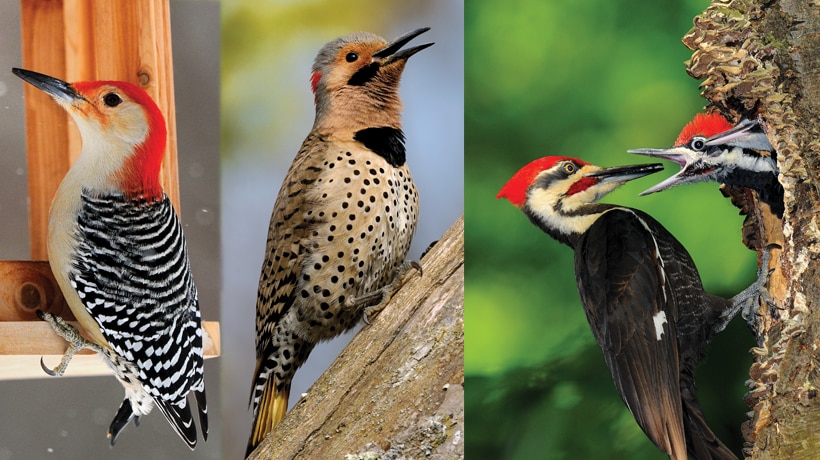Revealing the Tricks of Woodpeckers: Actions, Habitat, and A Lot More
Woodpeckers, with their unique behaviors and specialized adjustments, have lengthy amazed scientists and nature lovers alike. By revealing the secrets bordering woodpeckers' behavior and environment choices, a deeper understanding of these bird marvels arises, supplying a glimpse right into their remarkable globe.
Woodpecker Habits Insights
In taking a look at woodpecker habits, an interesting screen of specialized skills and adjustments arises, clarifying their amazing ecological niche - Woodpeckers in Florida. Woodpeckers, known for their distinct drumming on trees, have a variety of behavioral traits that add to their survival and success in their atmosphere. One essential behavior is their drumming, which offers several purposes such as interaction, developing territory, attracting mates, and locating food sources. This balanced pecking likewise showcases their amazing strength and endurance, as they can hammer away continuously at broadband without creating injury to themselves.
Furthermore, woodpeckers display an unique feeding actions defined by their ability to essence insects from tree bark using their specialized beaks. Their long, barbed tongues help in capturing victim, while their solid neck muscles supply security and precision throughout pecking activities. This feeding technique permits woodpeckers to access covert insect larvae and remove them with remarkable effectiveness.
Environment Preferences and Selection
What elements influence the habitat preferences and choice of woodpeckers? One crucial element influencing woodpecker habitat selection is the availability of suitable nesting sites. Woodpeckers generally choose forests with a mix of mature trees that give enough possibilities for dental caries excavation.
In addition, woodpeckers reveal a choice for environments with a plentiful supply of food sources. They are primarily insectivorous, feeding on beetles, ants, larvae, and various other pests located in rotting wood or tree bark. Woodpeckers have a tendency to prefer wooded areas with a varied insect populace to satisfy their dietary needs.
Moreover, the visibility of dead or rotting trees is one more key factor in woodpecker environment choice. These trees not only provide food resources however also offer ideal substrate for cavity excavation. Dead trees are essential for the upkeep of healthy woodpecker populations, as they play a vital function in the woodpeckers' life cycle and ecological community characteristics.
Feeding Habits and Diet Regimen Composition
Woodpeckers demonstrate a specialized feeding habits focused on foraging for insects within numerous habitats. Their diet primarily includes pests such as beetles, ants, caterpillars, and crawlers, which they find by touching on tree bark and listening for the audio of motion inside. Woodpeckers utilize their solid beaks to drill right into the wood and their long, barbed tongues to remove prey from holes. Along with insects, woodpeckers also consume tree sap, fruits, nuts, and seeds, adding variety to their diet regimen relying on the season and availability of food resources.
The foraging strategies of woodpeckers are well-adapted to their arboreal way of living. Woodpeckers play an important function in maintaining the health of woodlands by controlling insect populations and assisting in the disintegration of timber.
Drumming Sounds and Interaction
Utilizing rapid drumming noises on various surface areas, woodpeckers use a distinctive type of communication to signal territory borders and draw in friends. This drumming actions is not just a means of interaction yet also acts as a means for woodpeckers to establish their presence within a certain location. The intensity, speed, and pattern click to find out more of the drumming can share important information to various other woodpeckers in the vicinity.
Woodpeckers utilize drumming noises to reveal their existence in an area and to warn off possible trespassers. The loud and repetitive nature of the drumming functions as a clear signal to other woodpeckers that the area is currently declared. This aids in minimizing conflicts and lessening physical confrontations in between individuals.

Survival Adaptations and Specialized Composition

Final Thought
To conclude, woodpeckers exhibit read review unique actions, such as drumming noises for communication, and have actually specialized makeup for survival in their selected habitats. Their feeding habits and diet regimen structure further show their versatility to various settings. By recognizing these aspects of woodpeckers, scientists and preservationists can much better safeguard and preserve these remarkable birds and their ecosystems.